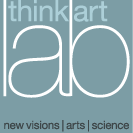Paradoxes of Interactivity
“Interactivity is all there is to write about:
It is the Paradox and the Horizon of Realization."
Finally, the Book arrived:
Paradoxes of Interactivity:
Perspectives for Media Theory, Human-Computer Interaction, and Artistic Investigations
(Paperback)
by Uwe Seifert (Editor), Jin Kim (Editor), Anthony Moore (Editor)Oktober 2008, 344 S., kart., zahlr. Abb., 35,80 €
ISBN 978-3-89942-842-1
Reihe Kultur- und Medientheorie
http://www.transcript-verlag.de/ts842/ts842l.php
includes:
Double Cross Playing Diamonds
"The paper "Double Cross Playing Diamonds" is a further development of the Diamond Way of Thinking, which is inspired by the Chinese writing system and applications of polycontextural logics to category theory.A new understanding of interactivity is proposed.
It is introduced as a comparison between Robin Milner's model of interaction and the diamond strategies to interactionality."
****
Über das Buch [transcript]
Current findings from anthropology, genetics, prehistory, cognitive and neuroscience indicate that human nature is grounded in a co-evolution of tool use, symbolic communication, social interaction and cultural transmission. Digital information technology has recently entered as a new tool in this co-evolution, and will probably have the strongest impact on shaping the human mind in the near future. A common effort from the humanities, the sciences, art and technology is necessary to understand this ongoing co- evolutionary process.
Interactivity is a key for understanding the new relationships formed by humans with social robots as well as interactive environments and wearables underlying this process. Of special importance for understanding interactivity are human-computer and human-robot interaction, as well as media theory and New Media Art.
»Paradoxes of Interactivity« brings together reflections on »interactivity« from different theoretical perspectives, the interplay of science and art, and recent technological developments for artistic applications, especially in the realm of sound.
Interactivity is a key for understanding the new relationships formed by humans with social robots as well as interactive environments and wearables underlying this process. Of special importance for understanding interactivity are human-computer and human-robot interaction, as well as media theory and New Media Art.
»Paradoxes of Interactivity« brings together reflections on »interactivity« from different theoretical perspectives, the interplay of science and art, and recent technological developments for artistic applications, especially in the realm of sound.
Editorial Reviews (Amazon)
Product DescriptionTaking into account the drastic over-use of the term "interactivity" in connection with new media, this anthology is designed to scrutinize the preconceptions that surround the idea of human-computer interaction.
German media theories of agency, algorithmic semiotics, interfaciology, mediality, performativity, and transcriptivity are combined with international artistic and technological investigations including interactive audio programming as well as robotic and artificial life art.
Several essays give an overview of interactive music and sound performances, which up to now have rarely been discussed.




